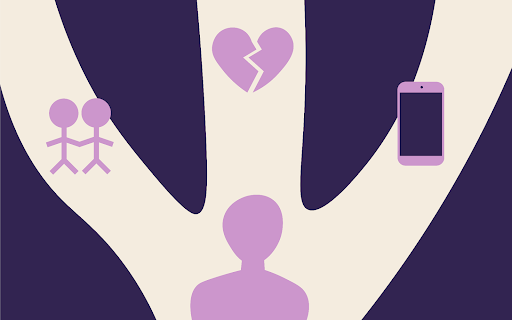The first day of March started off just like any other day. What I thought was the perfect, calm opportunity to take a nap and catch up on some writing suddenly became a vivid nightmare.
The cops were aggressively knocking on my next-door neighbor’s apartment. At first, I thought it was something else: out of the 16-floors in my co-op, the only family my neighbors would complain about was the one who shared a wall with my apartment.
Little did I know that on March 1, 2016 one of the family members found the solution to end her problems.
The 63-year-old mom had jumped off the balcony from the seventh floor. I looked down my apartment balcony to find the yellow tape surrounding the area in the sidewalk where she had fallen. The detective asked me a few questions and I heard his co-worker whisper to him, “She didn’t make it,” she said.
As I looked for articles covering the sad news, I found a short news brief from the New York Daily news, with minimal information. A woman, mother, and wife, was reduced to a 63-year-old woman who jumped off the building.
Suicide is one of those issues that everyone knows happens, everyone knows it is a serious matter, but not everyone talks about it as much as they should.
On April 22, 2016 the New York Times published an article titled, “U.S Suicide Rate Surges to a 30-Year High.” The article, based off the National Center for Health Statistics study released that same day, stated the increases in the number of suicides in every age group with the exception of older adults.
These results were based on data from 1999-2014.
According to the National Center for Statistics’ study, “suicide rates for females were higher in 2014 than in 1999 for all age groups under 75 years.” Data from the National Vital Statistics System, showed that the increase in suicide rates for women was the greatest for those between 10-14 years old, and for males aged 45-64.
Also according to the study, suicide among adolescents and young adults is rising and is among the leading causes of death within those demographic groups. Suicide among middle-aged adults is increasing as well.
Frances Gonzalez, the Assistant Director of Communications at the National Suicide Prevention Lifeline, part of the Mental Health Association of NYC, shared a statement with the Torch released by the partners of the National Alliance for Suicide Prevention.
In the statement they addressed the results found in the Center for Disease and Control Prevention (CDC), which states that the suicide rate increased over a 15-year period to an overall increase of 24 percent. According to the statement, the data shows the importance of suicide prevention in the United States, and why “greater efforts must occur to reverse this disturbing trend.”
The statement also shows how the Substance Abuse and Mental Health Services Administration (SAMHSA) created the National Action Alliance for Suicide Prevention by developing relationships with leaders across the U.S to implement suicide prevention strategies in various ways.
They are also increasing their social media and technology presence to further their reach. Its partners include Facebook, Twitter, Google and Apple.
We also read that for every person who loses his or her life to suicide, approximately 278 people have moved past thoughts of killing themselves and the majority of the ones who survive a suicide attempt continue to live a normal life.
The media usually covers the sad news, but not as much as we’d expect. Should they cover it more extensively while also sharing suicide survivor stories? According to the statement, it would help.
As the SAMHSA is increasing the promotion of the National Suicide Prevention Lifeline, more people are getting the help they need. This service is vital in assisting those callers with suicidal thoughts, and it’s expected to get more than 1.7 million calls this year.
“As mentioned in the statement, research shows that suicidality and distress is reduced for hotline callers, and the Lifeline is reaching more of them every year,” Gonzalez said.
According to her, ever since the Lifeline was created in 2005, they’ve provided free and emotional support “for people in suicidal crisis or emotional distress.”
She also said that the Lifeline can help via phone, online chat, social media and its website.
“I would encourage all people who are experiencing suicidal thoughts to call or chat with the Lifeline,” Gonzalez said. “The Lifeline is available 24/7 and is completely confidential. You don’t have to be suicidal to call.”
THE NATIONAL SUICIDE PREVENTION LIFELINE CAN BE REACHED AT 1-800-273-TALK(8255)







